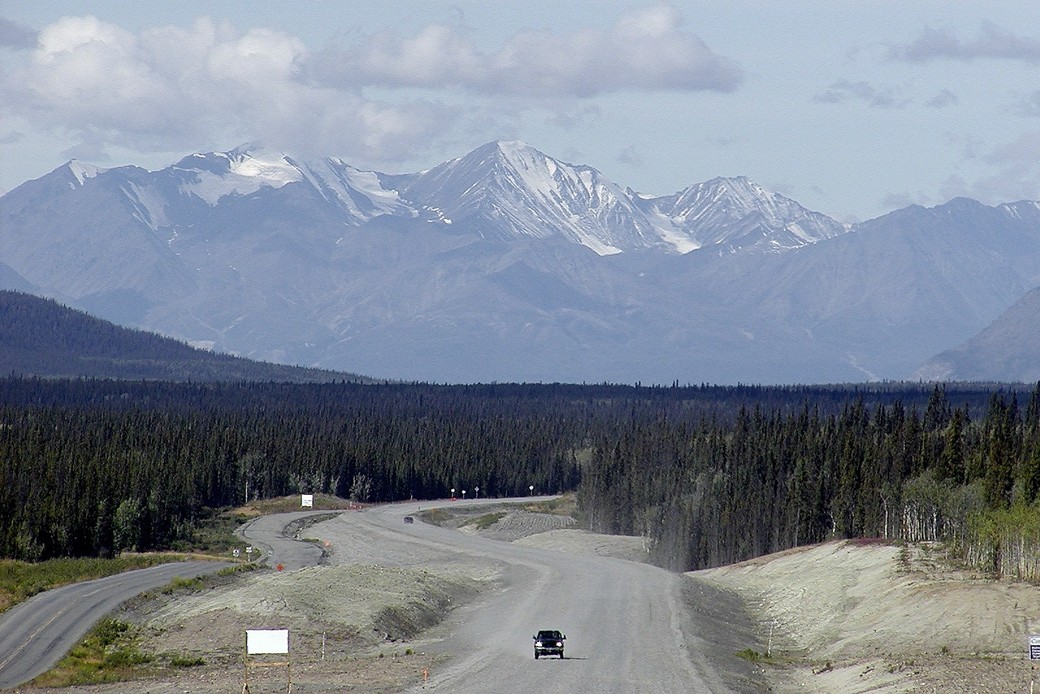
What’s Happening North of 60
Canada is a country born from colonization. This process, and the residential schools that followed, have had monstrous effects on First Nations peoples, effects that we are only beginning to acknowledge through the Truth and Reconciliation Commission. But the colonization of the North, for the First Nations, Métis and Inuit people is a process that only began in full-force less than a century ago. The Northern populations in Canada, especially in the three territories, have a unique and complex place in this country, a place that people in the South might not fully understand. This is why Ottawa Life has embarked on a True North series, to try to connect Canada’s South to its people North of 60.
One of the most pressing and glaring issues that affects every part of the North, is climate change. A report recently released by Natural Resources Canada, notes that climate change has created drastic changes along Canada’s northern coastline. According to the report, the total amount of Arctic sea ice has decreased by 13 percent since 1980, and, sea levels are expected to rise between 28cm and 1m, over the next century.
Jackie Dawson, Head of the Institute for Science, Society and Policy at the University of Ottawa, says that the effects of climate change are more than statistical factors, in the North.
“Because of the permafrost melting, buildings and structures have to be moved, and that means flying these buildings, which is very expensive,” says Dawson. “The ice is getting thinner, so for hunting and fishing, people can no longer read the ice and pass down local knowledge that’s been held there for generations. Not being able to read the ice is a dangerous thing.”
Climate change has also led to the opening of the Northwest Passage (NWP), a shipping route that cuts across Canada’s northern islands. According to Dawson, there are some benefits and some drawbacks to this development. For one, it would bring much more business through to the North, and, it has already done so, with Arctic tourism.
Dawson says that the passage isn’t fully open yet, but this won’t last long. China is already planning trade routes across Canada’s North, and Dawson believes the government needs to drastically update their marine regulations and infrastructure.
“If there’s a disaster up there, how will we deal with it?” says Dawson, reiterating a worry that increased shipping would lead to an environmental disaster, perhaps a lack of security in borders and make the northern population more vulnerable to the international community.
Ownership of the passage is still up for debate. Last year, The Gordon Foundation conducted and international poll showing that although the US was the main detractor of Canadian sovereignty over the NWP, less than half of Southern Canadians believed that the passage lies within Canadian waters.
But the territories also have specific complexities that intermingle with these global issues. The Yukon, the Northwest Territories and Nunavut, cover about 40 percent of Canada’s landmass, while its residents make up three percent of Canada’s population.
And yet percentages don’t truly speak to the diversity of northern cultures. In the Yukon, there are 14 First Nations, who speak eight different languages, whereas, the majority of Inuit live in one of four regions known collectively as Inuit Nunangat (that comprises Nunavut, Nunavik in Quebec, Nunatsiavut in Labrador and Inuvialuit in the Northwest Territories).
Traditionally, territories have been federally-governed and funded, but, in the past few decades, northern sovereignty has been an essential goal for the territories. This is called devolution, a process that devolves federal powers to the territories, much like they would to provinces. Although this process has developed over the last 40 years, especially in the Yukon and the Northwest Territories, the federal government still funds the three territories through “formula financing”, in order to provide the basic governmental services that other Canadians have access to, in a supposedly comparable fashion.
Tony Penikett was Premier of the Yukon between 1985 and 1992. He then acted as Nunavut’s Chief Devolution Negotiator, until 2012.
Penikett believes that for the most part, southern Canadians don’t understand the massive strides that northern Indigenous groups have taken towards self-governance, not only in territorial governments, but also in direct owner-ship of thousands of acres of land.
“In the Yukon, as a result of self-governance agreements, the First Nations acquired most local governments’ powers, most of the Indian Act powers, but also the quasi-provincial powers. So, in the Yukon Territory and in the Northwest Territories, where you have similar arrangements, you have villages that have quasi-provincial powers.”
Penikett believes that control over land and resources is essential for prosperity. He pointed to Alberta, formerly part of the Northwest Territories; it too, received formula financing, and then it evolved into a poor province until it struck oil, which allowed it to be one of the most prosperous regions in the country.
And yet, land ownership isn’t the answer to all problems.
“Every single group north of 60 that has negotiated a treaty with Canada in the last 40 years has complaints about implementation,” says Penikett, who believes that this is one of the main issues that every federal government has neglected.
While land has helped Aboriginal communities in the Yukon and in the Northwest Territories, the situation is peculiar in Nunavut. The majority of people in Nunavut are Inuit, young, with a median age of 23, and suffering from unemployment. A parliamentary report suggests that the Northern economy suffers from limited infrastructure, high transportation costs, population dispersion and limited formal education and industrial skills.
Even so, Inuit communities rely heavily on hunting, fishing and trapping, an economy Statistics Canada values at around $40 million a year. But even this traditional way of subsistence is in crisis.
Penikett explained that during colonization, the Canadian government moved most Inuit into towns, making people more sedentary and encouraging a high-carb diet. This has led to chronic ailments, and to more reliance on shipping in food, which is extremely expensive.
Add to that the damning effects of climate change on fish and fauna. The North, and especially, Nunavut, are facing extreme food insecurities. The Council of Canadian Academies reported that at least 70 percent of people in Nunavut experience moderate-to-severe food insecurity — that number drops to just eight percent, for the rest of Canada.
As for the rest of the economy, most people are directly employed through the government, or government support services, or, they work in small businesses, tourism or the resource industry.
But the idea that the North is resource-rich is not as straightforward as it seems. Mining for diamonds and metals is a “boom and bust” industry. Its profits aren’t stable because of their dependence on fluctuating markets. Although Nunavut is expected to hold at least a trillion dollars worth of oil and gas, those resources are expensive to harvest, and are in lower demand than they used to be. Furthermore, if Nunavut doesn’t have a self-governance agreement, little money made from those resources would go back to the people.
According to Penikett, self-governance is not coming any time soon.
“We also have housing insecurity, incredible housing shortages. We have unbelievably high energy prices, because all the fuel is imported diesel. It all adds to a lot of poverty in Nunavut, and in many cases, extreme poverty.”
Penikett says that at this point only the federal government is equipped to respond to the massive challenges that Nunavut is facing. He believes that even if they were given more generous resource revenue, it would still take a long time to implement the basics of infrastructure and modern government that they need.
“These inequities make it challenging for people to meet their basic needs, and place undue stress on the lives of our people,” reads a report on suicide prevention released by Inuit Tapiriit Kanatami (ITK), the national representational group for Inuit Nunangat, in Ottawa.
According to ITK, the rates of suicide in Nunangat are up to 25 times higher than in the rest of Canada, which represents the human toll of the many unresolved issues in the North.
Of course this is just a sample of things happening north of Canada’s 60th parallel. The best way to understand North according to Penikett?
“You just need to go there.”







